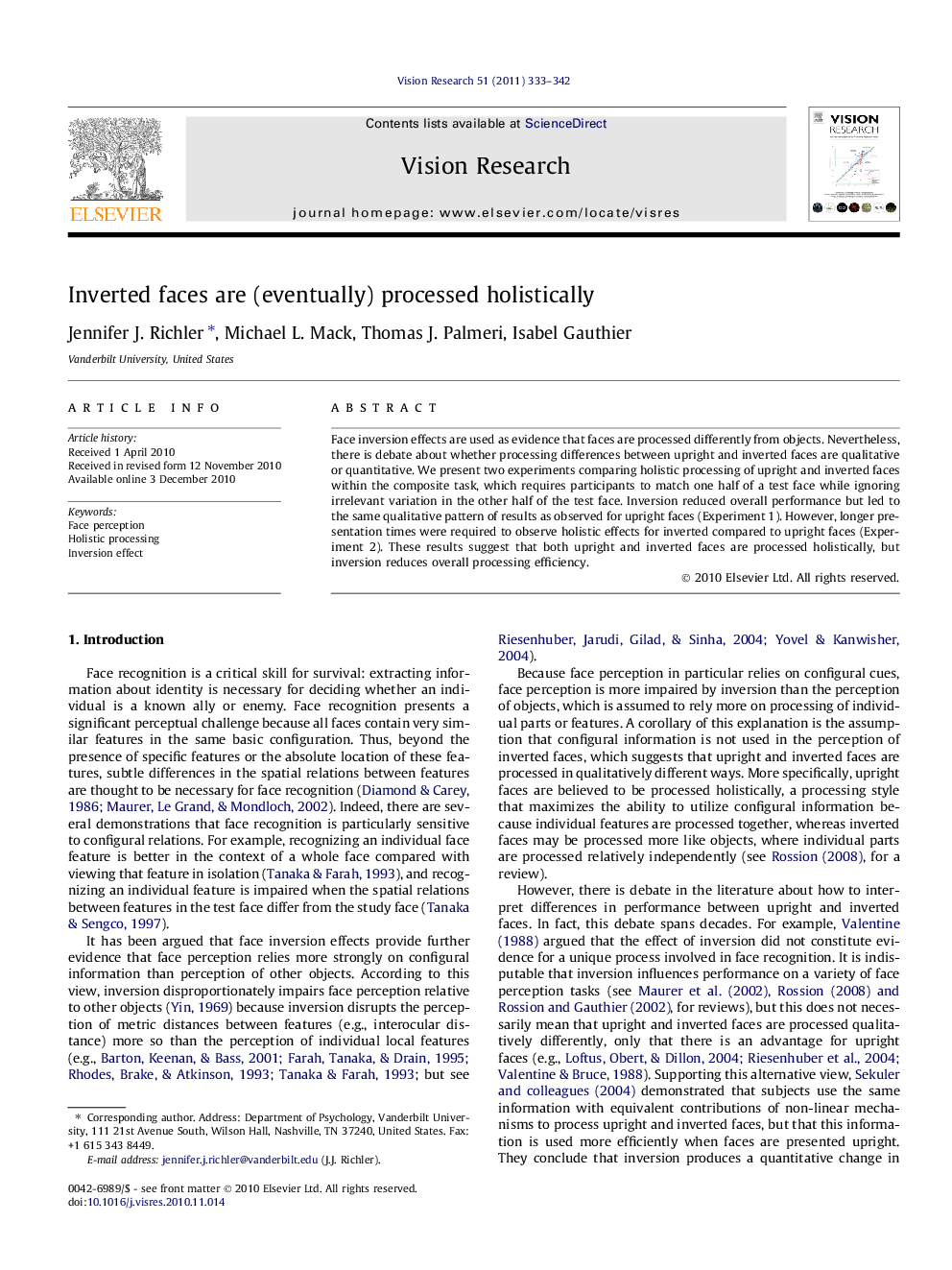| Article ID | Journal | Published Year | Pages | File Type |
|---|---|---|---|---|
| 4034271 | Vision Research | 2011 | 10 Pages |
Face inversion effects are used as evidence that faces are processed differently from objects. Nevertheless, there is debate about whether processing differences between upright and inverted faces are qualitative or quantitative. We present two experiments comparing holistic processing of upright and inverted faces within the composite task, which requires participants to match one half of a test face while ignoring irrelevant variation in the other half of the test face. Inversion reduced overall performance but led to the same qualitative pattern of results as observed for upright faces (Experiment 1). However, longer presentation times were required to observe holistic effects for inverted compared to upright faces (Experiment 2). These results suggest that both upright and inverted faces are processed holistically, but inversion reduces overall processing efficiency.
Research highlights► Overall accuracy is lower for inverted vs. upright faces. ► But inverted faces are processed holistically. ► Holistic processing of inverted faces requires longer presentation times.
